|
|

Hormones play a role in essentially every process in our body. For optimal health, proper hormone balance is crucial. When your hormones are in balance, you feel good, look good, and have abundant sustainable energy. When your hormones are out of balance, you may experience a wide range of symptoms that can affect mood and energy, and may also lead to more serious conditions like the development of uterine fibroid tumors, fibrocystic breasts, hormone positive cancers, thyroid dysfunction or Type II diabetes.
Hormones naturally fluctuate throughout a person's lifecycle, starting with puberty. After puberty, women experience menstruation and pre-menopause, followed by menopause. Men will, in later years, experience andropause: a less commonly known phenomena in which men around age 35, like women, experience a slow and steady decrease in their dominant sex hormones (testosterone and dehydroepiandrosterone).
When hormones are in balance, these transitions happen relatively smoothly. If hormones are out of balance, however, these transitions can be quite uncomfortable, and may even lead to more serious hormonal-related health problems. The severity of symptoms related to hormonal imbalance may increase with age, but it is not aging itself that is responsible for declining health. Instead, we must address the root cause of the symptoms: hormone imbalance. When hormones sway too far one direction or the other, accelerated aging and disease may occur.
Women and men have a combination of these hormones with women having more estrogen and progesterone and men having more testosterone. The right balance of each hormone is needed to regulate certain sexual and reproductive functions and prevent related health issues.
Estrogen - In women, this hormone is responsible for the development and function of breasts, edemetrium (inner layer of uterus), and the menstrual cycle. In men, estrogen levels help developing sperm and a healthy libido. As a normal part of the aging process, estrogen levels decrease in women with the onset of menopause. But the symptoms of lowering estrogen may be offset by adding natural estrogen sources, such as bioidential creams, as explained below.
Progesterone - The main function of progesterone is to prepare the uterus for a fertilized egg by thickening the lining of the uterus each month. According to www.hormone.org, low progesterone (in ratio to estrogen) can contribute to1:
Additionally, low progesterone levels can cause estrogen to increase, which may also lead to low libido, weight gain, and even gallbladder issues.
Testosterone - Responsible for development and function of men's reproductive organs, muscle and bone mass, and body hair. In women, testosterone contributes to bone and muscle strength, energy and wellness feelings, and libido2
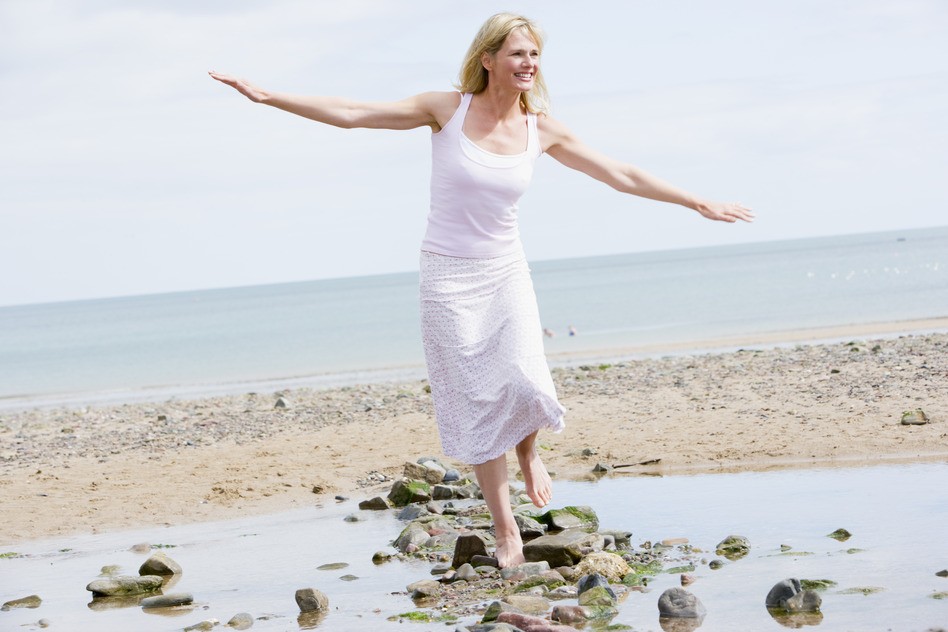
For women, from the time menses begins until menopause, levels of estrogen and progesterone ebb and flow in a manner which promotes reproduction. As women progress through their lives, hormonal imbalances can develop, even long before menopause due to a myriad of factors including exposure to xenoestrogens, poor biological hormone metabolism, poor diet and/or chronic stress. The natural decline of hormones during premenopause may also contribute to hormone imbalances.
Premenopause can start as early as mid-to-late thirties and is the period of time when symptoms of hormonal changes begin. These symptoms can last for 10-15 years prior to menopause. Pre-menopause is different from perimenopause according to Dr. John Lee M.D., who says "perimenopause technically means 'right around menopause,' meaning the year or two before, during, and after menstrual cycles end, however most women experience pre-menopausal symptoms long before perimenopause begins."
The symptoms of premenopause and perimenopause vary depending on hormone levels in the body. Some women experience:
Some women also notice:
The progression of hormone changes for men is usually more subtle. Similar to women in premenopause, men may begin to notice shifts in their hormones as early as 35, with the level of testosterone gradually decreasing about 1% annually. By about age 70, the decrease in a man's testosterone can be as much as 50%. Symptoms of andropause (male menopause) include:
Andropause may also contribute to insomnia, weight gain, and depression in some men.
Often when testosterone decreases, estrogen increases due to hyper-aromatization, where an enzyme called aromatase over converts testosterone into estrogen, further contributing to the symptoms listed above.
Extreme hormonal imbalance is created when the ratio of estrogen to progesterone sways too much one way or another. The most common extreme imbalance is Estrogen Dominance. Estrogen Dominance means that there is either too much estrogen in the body, or not enough progesterone, or both.
Estrogen dominance can contibute to symptoms and conditions including:
Even if a person has low estrogen levels, they can still have symptoms of estrogen dominance, because they may have little or no progesterone. Also important to note is that estrogen dominance can be caused by more than the body's production (or lack of production) of hormones. For example, hormone replacement therapy (HRT), birth control pills, environmental estrogens, plant estrogens, stress, obesity, poor liver function, hyperaromatazation, perimenopause, and glandular dysfunction can all contribute to estrogen dominance.
Men too, can suffer from hormone imbalances like estrogen dominance. Estrogen from plants, (known as phytoestrogens) and estrogens from environmental sources (known as xenoestrogens), along with the hyperaromatazation of testosterone into estrogen, produce hormone imbalances that can contribute to a variety of estrogen dominant symptoms.
Treatment offered to many people often fails to look for or address the root causes of person's hormonal imbalances. For example, women with uterine fibroids who have heavy and/or irregular periods are often prescribed a birth control pill to "control" their periods. These birth control pills usually contain estrogen, which only adds to any existing estrogen dominance problems, and feeds the growth of the fibroid tumor.
More young women today are experiencing infertility because they are not ovulating (usually due to too much environmental estrogen), yet they are being given fertility drugs without comprehensive hormonal evaluations. Though these women often succeed in ovulating or conceiving, this is a short-term treatment. Their symptoms of hormonal imbalance often reappear, sometimes manifesting into extreme hormonal imbalance.
Those whose symptoms are extremely painful and debilitating may often elect the surgical advice offered by their medical provider. While surgery is sometimes the best option for a person, consider that an estimated trillion-plus dollars were spent during the twentieth century to remove women's reproductive organs alone. Hysterectomy is now one of the most frequently performed surgeries in the U.S.
Before opting for surgery, many women and men who are suffering from hormonal imbalance conditions are opting to try more natural management strategies to restore balance. See suggestions below to help bring hormones back into balance through natural methods that can help you to feel good again.
As mentioned above, when estrogen levels are too low, similar symptoms can present due to the body trying to bring balance. This is why it is extremely important to seek the care of a health practitioner and request tests to determine the exact levels of hormones. If these tests and other factors conclude estrogen levels are low, then you can determine which combination of hormone replacement therapy is needed. These may include:
Restoring the balance of sex hormones is possible with the help of adequate nutritional support, natural hormone replacement (when necessary), exercise, herbs, and vitamins and mineral supplements.
With proper nutrition, supplements, exercise, and avoidance of environmental estrogens, it is possible to restore hormonal balance and feel energetic and youthful again.
It's important to have a proper understanding of the progression of sex hormones throughout a person's life, and how hormonal imbalances adversely affect a person's health. Without this knowledge, the initial solution may be prescribed synthetic hormones, antidepressants and other drugs to relieve the symptoms, often to no avail. By learning how you can change and/or maintain your health, you can alleviate many of the pre- and peri-menopause symptoms.
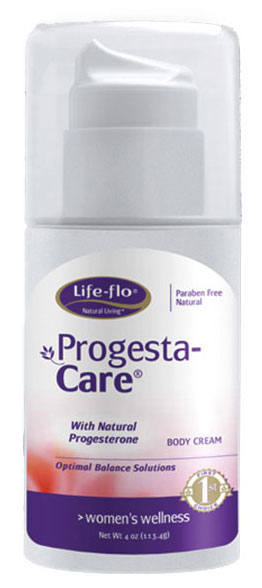 Progesta-Care, natural progesterone augments low progesterone levels and balances the ratio between estrogen and progesterone, thereby assisting in promoting proper hormone balance. It can be safely used by menstruating women, pre- and perimenopausal women, and menopausal women who are estrogen dominant.
Progesta-Care, natural progesterone augments low progesterone levels and balances the ratio between estrogen and progesterone, thereby assisting in promoting proper hormone balance. It can be safely used by menstruating women, pre- and perimenopausal women, and menopausal women who are estrogen dominant.
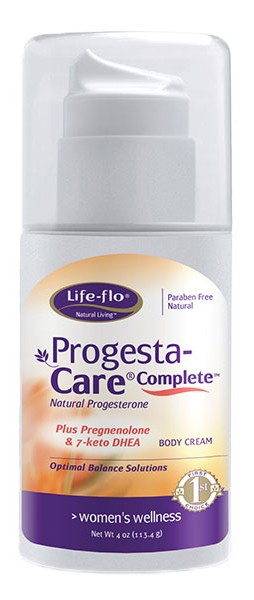 Progesta-Care Complete Cream contains bioidentical progesterone as well as prognenolone and 7-Keto DHEA and can be used by those who are estrogen dominant and/or suffereing from fibrous tumor-related conditions or as a general topical progesterone supplement.
Progesta-Care Complete Cream contains bioidentical progesterone as well as prognenolone and 7-Keto DHEA and can be used by those who are estrogen dominant and/or suffereing from fibrous tumor-related conditions or as a general topical progesterone supplement.
Men with estrogen dominance can also benefit from progesterone for men.
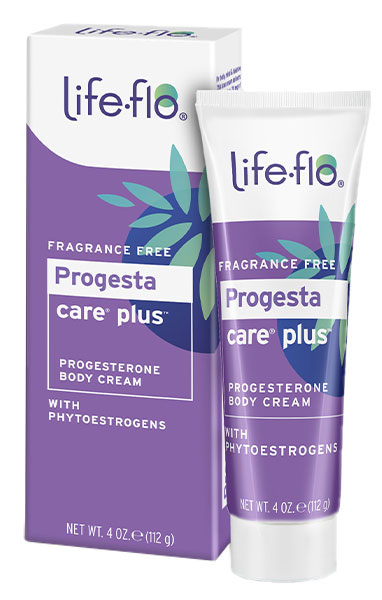 Progesta-Care PLUS is a natural bioidentical progesterone cream with phytoestrogens that is designed for use by women in their perimenopausal and menopausal years for optimal balance of both progesterone and estrogen.
Progesta-Care PLUS is a natural bioidentical progesterone cream with phytoestrogens that is designed for use by women in their perimenopausal and menopausal years for optimal balance of both progesterone and estrogen.
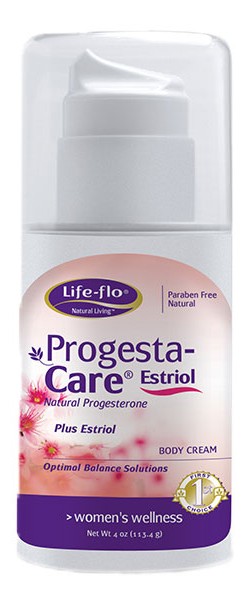 Progesta-Care Estriol contains an optimal balance blend of natural progesterone and estriol in an easy-to-use pump. Each full press of the pump contains approximately 20mg progesterone USP and 0.75mg estriol.
Progesta-Care Estriol contains an optimal balance blend of natural progesterone and estriol in an easy-to-use pump. Each full press of the pump contains approximately 20mg progesterone USP and 0.75mg estriol.
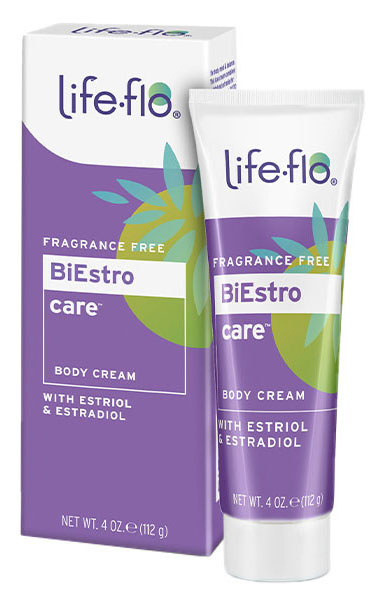 BiEstro-Care Cream combines two forms of natural estrogen in an 80/20 ratio. Each pump press contains approximately 1mg of natural estriol USP and 0.25mg of natural estradiol USP and is packages in an airtight, hygienically sealed container. Contains no synthetic preservatives or parabens.
BiEstro-Care Cream combines two forms of natural estrogen in an 80/20 ratio. Each pump press contains approximately 1mg of natural estriol USP and 0.25mg of natural estradiol USP and is packages in an airtight, hygienically sealed container. Contains no synthetic preservatives or parabens.
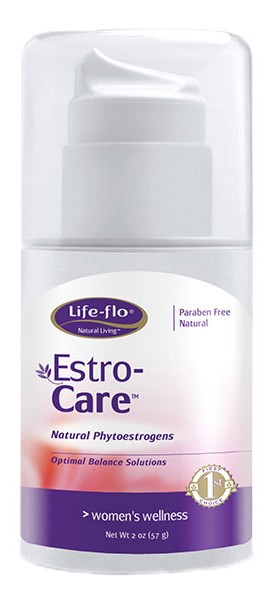 Estro-Care Cream with natural phytoestrogens comes in an optimal balance solution containing approximately 25mg natural phytoestrogens plus MSM and hyaluronic acid in an easy-to-use, pre-measured application pump.
Estro-Care Cream with natural phytoestrogens comes in an optimal balance solution containing approximately 25mg natural phytoestrogens plus MSM and hyaluronic acid in an easy-to-use, pre-measured application pump.
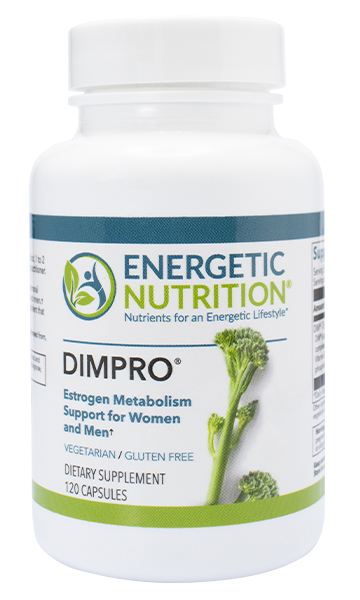 DIM - Diindolylmethane is a naturally occurring phytonutrient that is found in cruciferous vegetables. DIM promotes beneficial estrogen metabolism and healthy hormonal balance. This optimizes the ratio of estrogen metabolites that is crucial for breast, uterine, cervical, and prostate health. Women and men also use DIM as an integral part of successful weight management programs. Taking DIM not only promotes healthy estrogen metabolism, it can also promote a more desirable action from testosterone.
DIM - Diindolylmethane is a naturally occurring phytonutrient that is found in cruciferous vegetables. DIM promotes beneficial estrogen metabolism and healthy hormonal balance. This optimizes the ratio of estrogen metabolites that is crucial for breast, uterine, cervical, and prostate health. Women and men also use DIM as an integral part of successful weight management programs. Taking DIM not only promotes healthy estrogen metabolism, it can also promote a more desirable action from testosterone.
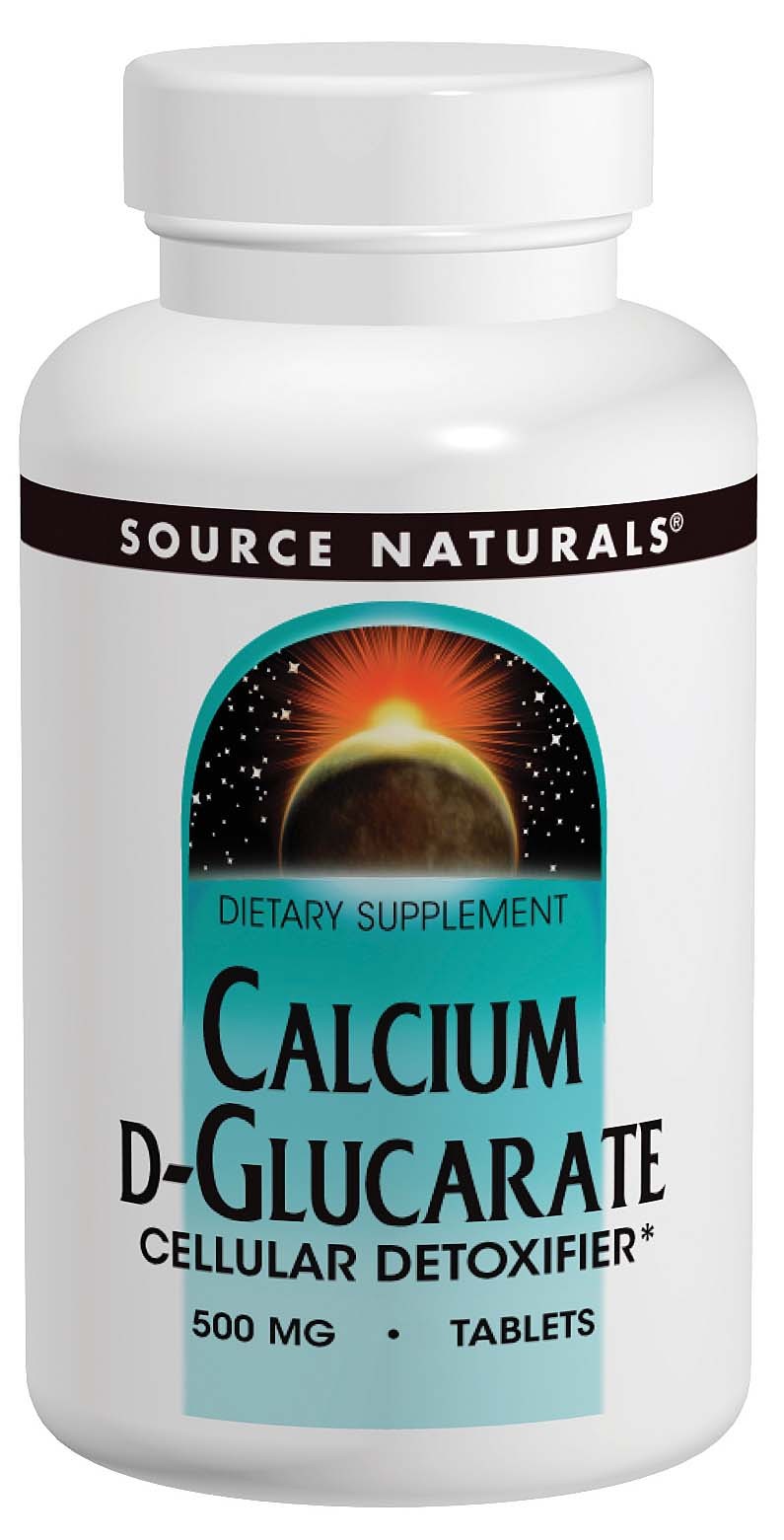 Calcium D-Glucarate is a botanical extract found in fruits and vegetables that can be beneficial in helping to remove toxins and excess used hormones, preventing them from being reabsorbed into the blood stream and deposited in the tissues of your body.
Calcium D-Glucarate is a botanical extract found in fruits and vegetables that can be beneficial in helping to remove toxins and excess used hormones, preventing them from being reabsorbed into the blood stream and deposited in the tissues of your body.
 Pure Essence Labs offers two different multivitamin formulas. Life Essence multivitamin/mineral supplement provides the vitamins and minerals your body needs. It also delivers enzymes, metabolic pigments, flavones, trace elements, amino acids, antioxidants, and countless co-nutrients and phytochemicals. One 'n' Only is a once daily version of the Life Essence multi that is the most nutritious one per day dietary supplement ever offered.
Pure Essence Labs offers two different multivitamin formulas. Life Essence multivitamin/mineral supplement provides the vitamins and minerals your body needs. It also delivers enzymes, metabolic pigments, flavones, trace elements, amino acids, antioxidants, and countless co-nutrients and phytochemicals. One 'n' Only is a once daily version of the Life Essence multi that is the most nutritious one per day dietary supplement ever offered.
NOTE: It is important to understand that the journey of hormonal changes is an individual one. In other words, the treatment for one individual can be quite different from that of another. The information presented here is intended for informational purposes only. Always discuss the addition of supplements or hormone replacement therapy options with a licensed health care provider before beginning any treatment.
You can read more about estrogen dominance from Dr. Lee's book, Hormone Balance Made Simple
Estrogen Dominance - For further information about hormones, estrogen dominance, and environmental estrogens.
Environmental Estrogens - Learn more about xenoestrogens and phytoestrogens.
Uterine fibroids - Learn about uterine fibroid tumors.